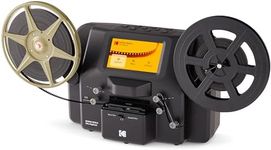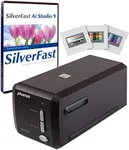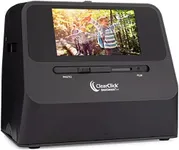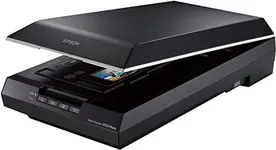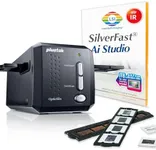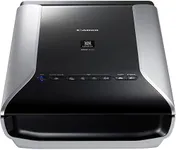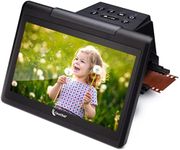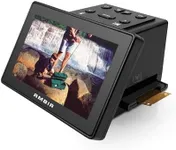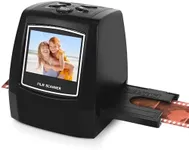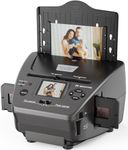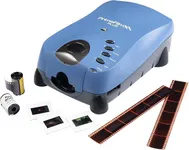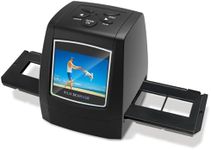Buying Guide for the Best Photo Negative Scanners
Choosing the right photo-negative scanner can be a game-changer for preserving and digitizing your old film negatives. The right scanner will ensure that you get high-quality digital images that are true to the original negatives. When selecting a photo-negative scanner, it's important to consider several key specifications to ensure you get the best fit for your needs. Understanding these specs will help you make an informed decision and get the most out of your purchase.ResolutionResolution is measured in dots per inch (DPI) and determines the level of detail the scanner can capture. Higher resolution means more detail and larger file sizes. For general use, a resolution of 2400 DPI is usually sufficient. If you need to capture very fine details or plan to print large photos, look for a scanner with 4800 DPI or higher. Consider your end use: if you are archiving family photos for digital viewing, a lower resolution may suffice, but for professional or high-quality prints, higher resolution is essential.
Color DepthColor depth, measured in bits, indicates how many colors the scanner can capture. Higher color depth means more accurate and vibrant colors. Most scanners offer 24-bit color depth, which is adequate for most users. However, for professional use or if you want the most accurate color reproduction, look for scanners with 48-bit color depth. Think about how important color accuracy is for your project; for casual archiving, 24-bit is fine, but for professional work, 48-bit is preferable.
Dynamic RangeDynamic range, measured as Dmax, indicates the scanner's ability to capture the range of light and dark areas in the negatives. A higher Dmax value means better detail in shadows and highlights. For most home users, a Dmax of 3.0 to 3.6 is sufficient. Professional photographers or those working with very high-contrast negatives might prefer a Dmax of 4.0 or higher. Consider the quality of your negatives and how much detail you need to capture in both dark and light areas.
Scanning SpeedScanning speed refers to how quickly the scanner can digitize a negative. Faster scanning speeds can save time, especially if you have a large number of negatives to scan. Entry-level scanners may take a few minutes per negative, while higher-end models can scan in seconds. If you have a large collection or need to scan frequently, a faster scanner will be more convenient. For occasional use, scanning speed may be less critical.
Software and CompatibilityThe software that comes with the scanner can greatly affect your experience. Good software will offer features like dust and scratch removal, color correction, and batch scanning. Ensure the scanner is compatible with your operating system and that the software meets your needs. If you are a beginner, look for user-friendly software. Advanced users might prefer software with more manual controls and editing options. Compatibility with your computer and ease of use should guide your choice here.
ConnectivityConnectivity options determine how you connect the scanner to your computer. Most scanners use USB connections, but some higher-end models offer wireless or Ethernet options. USB 3.0 provides faster data transfer than USB 2.0. If you need to scan directly to a network or multiple devices, consider a scanner with wireless or Ethernet connectivity. Think about your setup and how you plan to use the scanner; for most home users, USB connectivity is sufficient.
Size and PortabilityThe size and portability of the scanner can be important if you have limited space or need to move the scanner frequently. Compact scanners are easier to store and transport but may have fewer features. Larger scanners often offer better performance and more features but require more space. Consider where you will use the scanner and how often you need to move it. If space is limited or you need a portable option, look for a compact model. For a dedicated scanning station, a larger model might be more suitable.

